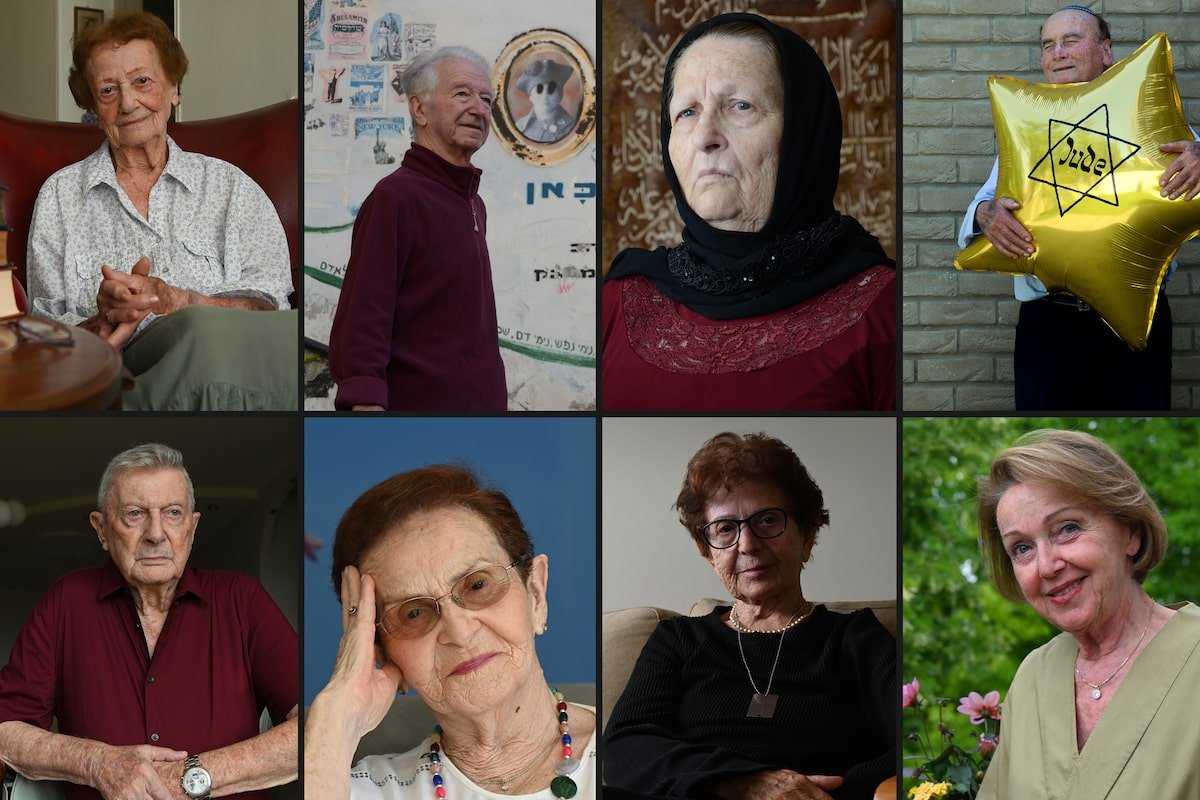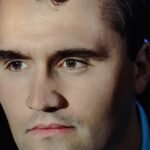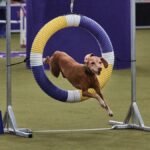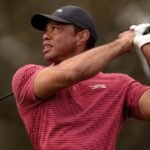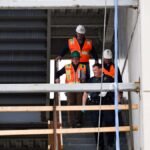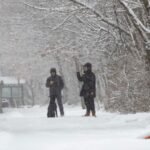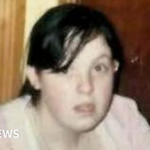Started in 2018, the Humans of the Holocaust project by photographer Erez Kaganovitz documents the memories of Holocaust survivors. To mark the 80th anniversary of the liberation of Auschwitz, Mr. Kaganovitz shares the inspiration behind his survivor portraits.
“As a grandson of Holocaust survivors, I feel it’s imperative to fight back against the current surge of antisemitism by better informing and educating people about the dangers of antisemitism and blind hatred.
“Through the Humans of the Holocaust exhibitions, showcased at the National WWII Museum in New Orleans and at the Federal Ministry of Justice in Berlin, I have the profound honour of presenting thought-provoking photographs and testimonies from the last living Holocaust survivors of Auschwitz.
“These exhibitions stand as a powerful testament to the horrors that unfolded in Europe just 80 years ago and as a stark warning of the devastating consequences of antisemitism. They underscore the urgent need to confront and combat antisemitism wherever and whenever it arises. My hope is that the Humans of the Holocaust project and exhibitions will inspire greater awareness, educate future generations and reconnect people with the vital lessons of the Holocaust – lessons that must never be forgotten.”
When I was three years old, I became a human being without a country – a refugee. It was June 4, 1938, and Hitler took over the Sudetenland, the part of former Czechoslovakia that borders eastern Germany. The Jews of the Sudetenland, which included my parents, paternal grandparents and me, fled to Prague. I had a beautiful new red tricycle I had just received for my birthday. I was not allowed to take it with me. I cried bitterly.
We lived in a small apartment with my grandparents. It took only a few months for the Germans to take over the entire country. The Jews of Prague were sent to the Theresienstadt concentration camp, which served as a transport hub to the death camps.
After the war, only my mother and I had survived, out of 26 family members. After liberation, we went back to Karlovy Vary and lived in a house with friends. But it was never really home for me again.
Two years later, a great aunt living in Brooklyn sponsored my mother and me and we immigrated to America. Then, a year later we were allowed to move to Toronto. Refugees we were and so remained, until 1959, when I finally immigrated to the only land that would have me – Israel – not only as a refugee but as a bona fide citizen.
In today’s world, once more, there are so many refugees. It breaks my heart; so many Israelis were once refugees.
We must implement the lessons we learned during the Holocaust even today. The past is never truly in the past unless we learn from it. I’m not so sure that we have.
I can still remember the ramifications of the Anschluss [Nazi Germany’s annexation of Austria in March, 1938]. The day after the Anschluss I was kicked out of school because of the implementation of the Nuremberg Laws. On that day, my dad was fired from the Austrian Electric Company because of Anschluss. Our lives as we knew them in Austria had changed dramatically.
On Nov. 9, 1938, nine months after the Anschluss, Kristallnacht [Night of Broken Glass] burst in Germany and Austria. Jews were beaten on the street and Jewish synagogues and businesses were burned.
We remained in Vienna until October, 1942, and then were deported to the Theresienstadt concentration camp. A year later, we were deported to Auschwitz – the only place on Earth I can describe as a living hell. In Auschwitz, people died like flies. My mother got typhoid and was severely ill. Every day, I would go near the infirmary block and shout to her in the hope she would reply until one day, she didn’t. Later, I saw how they tossed her body into a cart that went straight to the crematorium.
I survived Auschwitz and was liberated by the U.S. Army in the Gunskirchen camp in Austria. By then, I was ill. I suffered from typhus and didn’t know if I would make it.
I remember telling myself that I wasn’t afraid to die as long as I died a free man. I’m happy to say that I survived, I’m alive and most importantly – I lived my life as a free man.
I was born in 1929 in Prague and had a wonderful childhood. Everything changed with the annexation of the Sudetenland to Nazi Germany in 1938.
In November, 1942, my parents and I were deported to the Theresienstadt concentration camp but our final destination was Auschwitz.
We were placed in the section called the Czech Family Camp. My mother soon got an infectious disease and was put in isolation. My father, who became a ghost of himself, died six weeks after our arrival.
The Kinderblock at the Czech Family Camp was established thanks to Fredy Hirsch, a German Jewish educator. He had previously organized educational and sports activities for children in the Theresienstadt concentration camp and was allowed to continue here.
During the day the children in the Kinderblock were divided into age groups each with an instructor and they taught them secretly to the best of their abilities. We had a small hidden library that I was in charge of, which included an atlas and a Russian textbook.
It was my responsibility to safeguard these precious volumes. If the Germans had found me with them, they might have killed me. The fact that I was able to sit indoors, not doing strenuous work in the cold outside, gave me a chance to save my strength and in fact enabled me to be chosen for life.
Indeed, the books saved me from death in the gas chambers.
I was only two years old when my mom and I were liberated from Auschwitz, so I don’t have any conscious memories. But it is deeply burned inside my body and soul because of the emptiness of growing up after Auschwitz, when so many of my family members were gone.
In November, 1944, my father, pregnant mother and I were sent on a cattle train to Auschwitz. When Jewish families reached Auschwitz, the Nazis decided who they would keep alive for forced labour and who would be gassed to death.
I wasn’t gassed, but I was tattooed with the number A-26959 – a number that I still have on my arm. I was only 2, so I couldn’t work and luckily I wasn’t chosen to take part in medical experiments, so why did they choose to tattoo me? I find only one answer: These “superhumans” thought we were rats, subhumans. And so it did not matter if you were two years old, or 80 years old.
On Jan. 27, 1945, we were liberated from Auschwitz by the Red Army, but I was very sick. I was hospitalized for weeks and one of the doctors told my mother I wouldn’t survive.
She lost her entire family in the Holocaust but was unwilling to give up on me. She stayed by my side, nurtured me and did everything in her power to keep me alive.
Despite Auschwitz, I became a pediatrician and psychotherapist, and most importantly created a beautiful family of my own. I’m happy to say that there is a life after Auschwitz.
Even in the darkest place on Earth, you can find a sense of humour.
When people think about the Holocaust, they rightfully think about the atrocities the Jewish people suffered.
The Nazis did everything they could to break our human spirit, so the only thing I could do to maintain my humanity was use my sense of humour and make myself and the people around me happy.
In Auschwitz, I worked cleaning the toilets, not something to laugh about.
Down the road, I discovered that it’s very difficult to laugh after you receive 10 lashes as a punishment.
During the Holocaust, I lost my entire family. The only survivors were my young brother, who later died at a young age in Israel, and a few cousins.
If not for my sense of humour and the hope that my father was waiting for me at home, I’m sure I would have run directly to the electric fence and killed myself on the spot.
This is exactly the reason why I’m posing with a yellow-coloured balloon in the shape of the yellow badge with the word “Jude” written on it, on a background of a brick wall.
I’m taking back the ownership of the symbol that turned me into a subhuman and turning it into an optimistic creation. When I tell my testimony in front of a crowd, I’m not skipping the moments of despair and crying. They are all there, but I would rather emphasize that life prevails.
After all, one of the most important mitzvahs in Judaism is to be constantly happy!
This is my life motto: Am Yisrael Chai! (The people of Israel are alive)
Am Yisrael Chai Vekayam! (The people of Israel are alive and endure)
Am Yisrael Chai Vekayam VMabsoot! (The people of Israel are alive, endured and satisfied)
On my 15th birthday, I got a present that I will never forget – a one-way ticket to hell. When the doors of the cattle car creaked open at Auschwitz-Birkenau concentration camp, I knew my life would never be the same. Like all prisoners, we went through a selection process that concluded who would be chosen for forced labour and who would be sent to the gas chambers.
In a split-second, Dr. [Josef] Mengele, infamously known as the ‘angel of death,’ decided that I and my three sisters, Sara, Riku, and Esther, would turn right and be assigned to forced labour while my dear father and mother, and my two youngest brothers would be led to the left, destined for a horrific fate at the gas chamber.
We found ourselves, the four sisters of the Cahana family, all alone in Auschwitz.
A few days later, at the second selection, we weren’t that lucky.
This time, Dr. Mengele only chose my two big sisters for forced labour, which meant that my youngest sister and I were heading to the gas chambers.
But I saw that a second selection started on the side, so I urged my youngest sister to join me in slipping into the line. Fate favoured us, and Dr. Mengele chose us for life this time.
Our life during the Holocaust, if you can call it life, was miserable and horrifying, but we were lucky because we had one another.
For many years, my mission has been to give my testimony to as many people as possible. A book was published in Germany about the story of my life in the Holocaust called How I Overcame Hatred and Anger – What Auschwitz Taught Me About the Concept of Love.
I was born in Bucharest, Romania, in 1935.
My father, who was born in Poland, was forcibly exiled from Romania because he was not a Romanian citizen, so my mother had to take care of our family alone while the hatred against Jews escalated in Romania. We managed to reunite with my father in Odessa. But we had to escape again because the Nazis were approaching Odessa.
We managed to get to Uzbekistan, which was a safe haven until the end of the war. My father died in 1945 of typhus. After the war, we immigrated to Israel.
Eight decades after the Holocaust, I experienced a second Holocaust. On the morning of the 7th of October, I heard sirens in my kibbutz signalling an imminent rocket attack. I tried to reach my son, my daughter-in-law and my grandchildren, who are also living in the kibbutz, but no one answered my calls.
Later that day, I heard knocking on my door and when I opened it I saw two Hamas terrorists. They were called away, so I seized the opportunity and ran back to my safe room.
After 14 hours, rescuers came and took me to a safe place. While getting there, the murderous rampage of that day was unveiled to me: The bodies of babies and young children were scattered on the lawn. Everything around me was damaged or destroyed. People who survived the massacre talked about death, murder, women raped and the destruction of our community. The whole trauma of being a Holocaust survivor came back to me.
My son, Avshalom, and two other family members were murdered in the massacre. Seven other members of my family, including my daughter Sharon and her son Noam, my daughter-in-law Shoshan, my grandchild Adi and her husband Tal, and their two kids Neve and Yahel were all kidnapped to Gaza.
I pray every day for the safe return of my family and all of the other hostages.
*Update: On Nov. 25, 2023, six members of Ms. Haran’s family, Sharon, Noam, Shoshan, Adi, Neve, and Yahel were released from Hamas captivity. Tal is set to be released in the first phase of the hostage-ceasefire deal in the coming weeks of 2025. There is still no information on his medical condition and whether he is alive or not.
I was born in Hungary, in a concentration camp, by the name of Yelka Bershatzki.
Luckily, the night I was born one of the German doctors my mother worked for turned out to be our guardian angel. He hid us – my father, mother, brother, two sisters and me – in a basement for more than two years, until the camp was liberated by Soviet and British forces. We went back to Yugoslavia, and in 1948, my parents decided to immigrate to Israel. I still remember our hardships on the way here, being utterly insecure about our chances to successfully cross the Mediterranean by ship and reach Haifa port. Fortunately, all of my family survived the journey.
The next twist in my life story occurred at the age of 15, when I met my future husband, Ahmed Jabarin. After a long courting period, I decided to marry him, even though he was not a Jew. At first, my family had a hard time, but as years went by, they made their best efforts to accept my choice.
In recent years, antisemitism, Islamophobia and xenophobia are on the rise all over the world. Jews are being slaughtered in synagogues [in Pittsburgh and San Diego] and Muslims are murdered in mosques [in Christchurch, New Zealand]. The victims, Jews and Muslims alike, are killed as a result of the same burning hatred towards “others.”
Hatred knows no boundaries – once I was persecuted for being a Jew, now people are after me for being a Muslim.
God doesn’t care which prophet you follow. Our duty as human beings is to remember what happened in the Holocaust and educate future generations about the fatal consequences of blind hatred.
Moses, Muhammad and Jesus can all co-exist.
These interviews have been edited and condensed.
